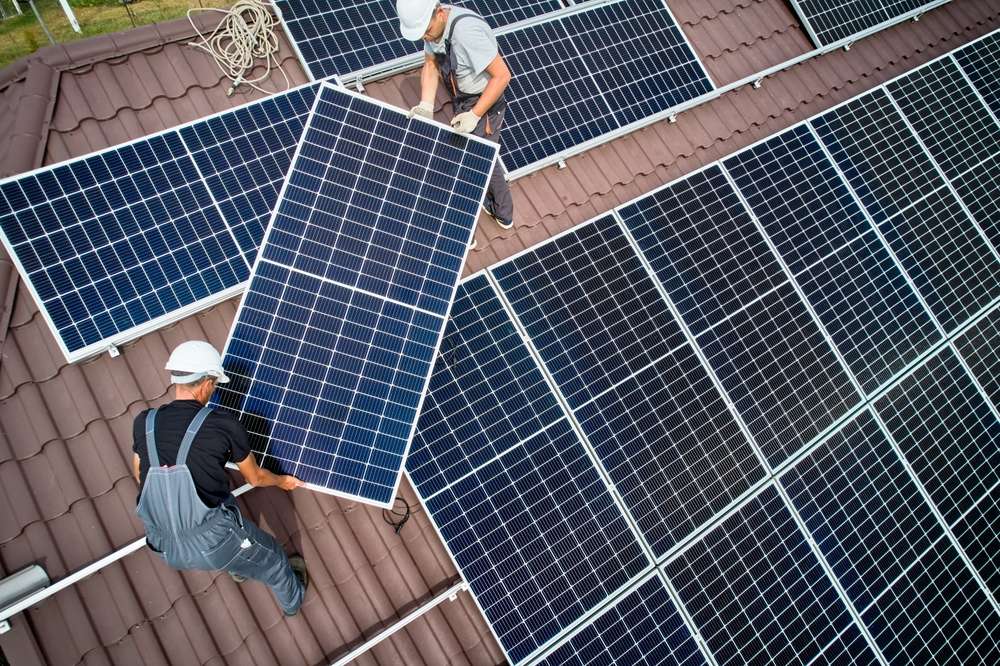Solar Roof Guide: Solar Panels, Installation & Benefits
A solar roof combines the protective function of a traditional roof with electricity generation, giving homeowners a long-term way to lower energy use and support clean technology. This guide explains what a solar roof is, how it differs from rooftop solar panels, the impact on home value and renewable energy goals, and practical considerations for roof installation and local services.

What is a solar roof and how does it work?
A solar roof is a roofing system that integrates photovoltaic (PV) materials directly into roofing tiles or panels so the roof itself generates electricity. Unlike aftermarket solar panels mounted above shingles, many solar roof systems replace conventional roofing materials with PV tiles or shingles that look like standard roofing while producing power. Solar roof systems capture sunlight with semiconductor cells and convert it to direct current, which an inverter then changes to alternating current for household use. Systems may include battery storage and smart inverters to manage energy flow, improve resilience during outages, and maximize self-consumption.
Are solar panels the same as a solar roof?
While both solar panels and a solar roof generate electricity from sunlight, they differ in form and installation. Traditional solar panels are mounted on top of an existing roof and come as modular arrays, making them relatively straightforward to add to many homes. A solar roof replaces or integrates with the roof covering, creating a more seamless aesthetic that some homeowners prefer. Performance between the two depends on factors such as panel efficiency, orientation, roof pitch, shading, and system design. For many households, installing solar panels is quicker and less disruptive, whereas a full solar roof may be better when a roof replacement is already needed or when appearance is a priority.
How does a solar roof support renewable energy goals?
Solar roofs advance renewable energy adoption by decentralizing clean electricity production at the point of use. Generating power on-site reduces consumption from fossil-fuel-based grid sources and can lower household greenhouse gas emissions. When paired with energy storage, solar roofs improve grid resilience and enable time-shifting of energy use, which supports broader integration of renewable energy into local grids. For communities, greater rooftop solar uptake can reduce peak demand pressure, defer infrastructure upgrades, and contribute to municipal sustainability targets. Choosing a solar roof contributes to these renewable energy outcomes while providing visible commitment to cleaner technologies.
Will solar roof projects count as home improvement and affect value?
Solar roof installations are typically considered a home improvement because they enhance a property’s functionality and energy efficiency. Studies indicate energy-saving home upgrades often appeal to buyers, and an efficient solar system can be an asset during resale, especially in markets where energy costs are high or sustainability is valued. Whether a solar roof increases resale value depends on system ownership, local incentives, and buyer preferences; owned systems generally add more perceived value than leased systems. Additionally, solar roofs often come with long warranties for both roofing and PV components, which can be an attractive selling point for prospective buyers.
What should I know about roof installation and local services?
Roof installation for integrated solar systems requires coordination between roofing and solar professionals. Assess your roof’s structural condition, age, and orientation before choosing a solar roof; if a replacement is already due, integrating PV materials may be efficient. Permitting, electrical inspections, and compliance with local building codes are part of the process, and installers offering both roofing and solar expertise will streamline the project. Seek quotes from reputable local services in your area, verify warranties, check licensing and insurance, and request references or portfolio examples. Consider potential shading from trees or nearby structures, and factor in roof design elements such as valleys and skylights that affect layout.
Maintenance, warranties, and long-term considerations
Maintenance requirements for a solar roof are similar to those for conventional solar panels: keep the surface reasonably clean, trim shading trees, and schedule periodic electrical checks. Integrated solar roofing products often include dual warranties covering both the roofing material and the electrical output; understand the terms, duration, and what triggers coverage. Consider the life expectancy of complementary systems like inverters and batteries, which may need replacement sooner than the roofing portion. Finally, explore available incentives or tax credits that apply in your jurisdiction; these can improve the economics of a solar roof but vary by location and over time.
A well-planned solar roof project balances aesthetics, energy goals, and practical roof installation considerations. Homeowners who evaluate their roof’s condition, compare trustworthy local services, and understand warranties and maintenance needs can make informed decisions that align with both home improvement priorities and renewable energy objectives.
Sources:






